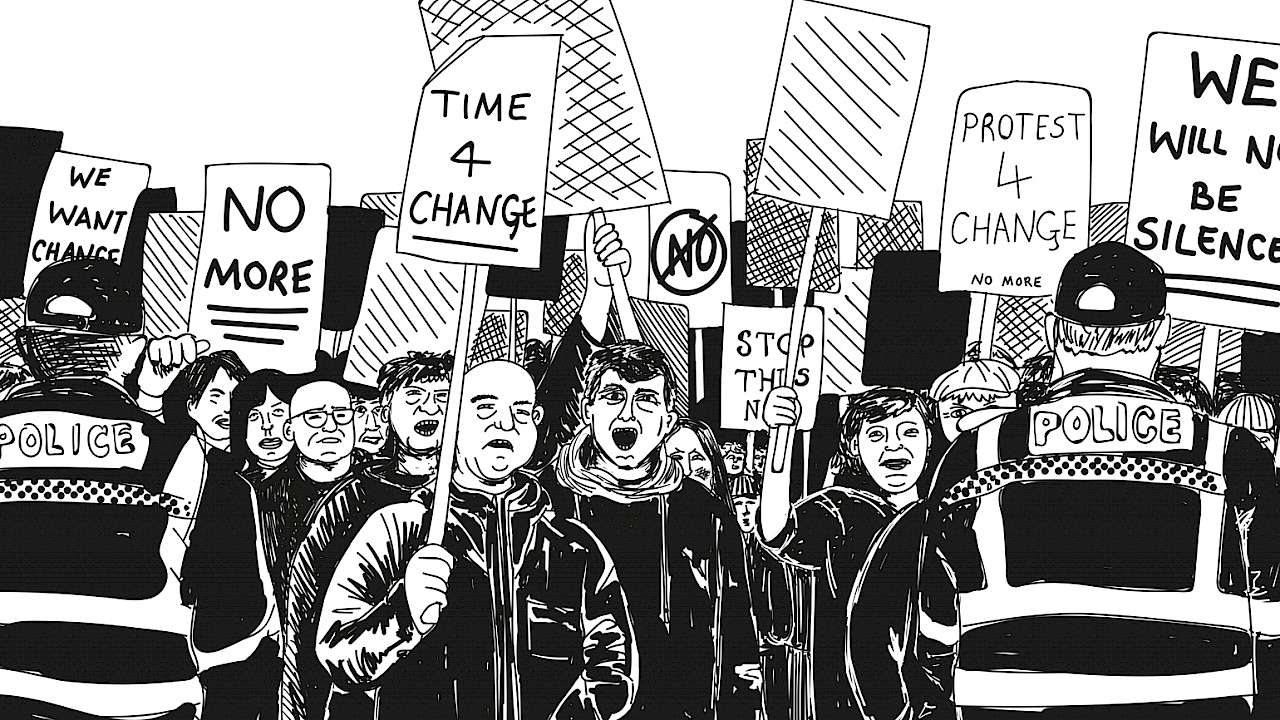Developing a coherent picture of the far-right is becoming harder. Although most people have a rough understanding of far-right activism as highly nationalistic, nativist, xenophobic, and in some cases violent, objective definitions of the far-right are hard to come by.
The label ‘far-right’ is best thought of as an ideological container for a range of groups and actors. It has been applied to groups as diverse as revolutionary neo-Nazi groups, and right-wing populist parties with parliamentary representation.
In part, this confusion is explained by the inconsistent use of terminology. Descriptions like ‘extreme’, for example, are often used to describe groups outside of formal democratic politics, while those contesting elections on the far-right are more often considered ‘radical’.
Terms like ‘Nazi’ and ‘fascist’, tend to have more specific meanings, but these are often misused in highly charged political spaces. The adoption of the label ‘populist’ to describe anti-immigration and nationalistic right-wing parties is, according to some, an attempt to paint over explicitly fascist legacies.
The adoption of the label ‘populist’ to describe anti-immigration and nationalistic right-wing parties is, according to some, an attempt to paint over explicitly fascist legacies
Added to the politicised and highly contested language surrounding the far-right is the increasingly complex organisational picture. Readily adopting new communications channels, the far-right has become a series of networks with traditional hierarchical organisations growing rarer.
Activists, like Anders Breivik, are free to access material from a range of positions on offer, cobbling their own ideologies together without the need for a centralised doctrine. As shown by the English Defence League, concepts such as membership are less important. The apparent mismatch between online support and participation in direct action also calls into question the commitment of many far-right activists.
The vast majority of far-right activists are non-violent, but they are an important consideration in security analysis. Acts of mass-casualty terrorism from the far-right, such as the 2011 attacks in Norway that killed 77, are rare but unpredictable. The far-right has also been influential in several acts of smaller-scale violence, including the murder of Labour MP Jo Cox in 2016, and the attempted murder of Dr Sarandev Bhambra in 2015.
Far-right groups and activists can also be the targets of violence. In 2015, two gunmen were killed in their attempt to attack a ‘Draw Mohammed’ contest in Garland, Texas, USA. In 2012, an attempted attack on an English Defence League rally in Dewsbury was uncovered by British police.
Although the relationship between hate crime and politics is difficult to unpick, organisations like Tell Mama and the Community Security Trust have argued that the far-right is linked to hate crime attacks. Far-right activism also comes at a cost to public order. Where mass public demonstrations are used as a tactic, the costs of policing and associated violence (often involving anti-fascists) lead to significant economic and social harms.
Finally, far-right activism supports narratives of other extreme groups, such as Islamic State, that seek to convince sections of the population that they cannot live peacefully in the UK, or the West more generally. Far-right activism that seeks to demonise minority groups such as Muslims potentially contributes to wider narratives of polarisation and resulting security threats.
Copyright Information
As part of CREST’s commitment to open access research, this text is available under a Creative Commons BY-NC-SA 4.0 licence. Please refer to our Copyright page for full details.
IMAGE CREDITS: Copyright ©2024 R. Stevens / CREST (CC BY-SA 4.0)





